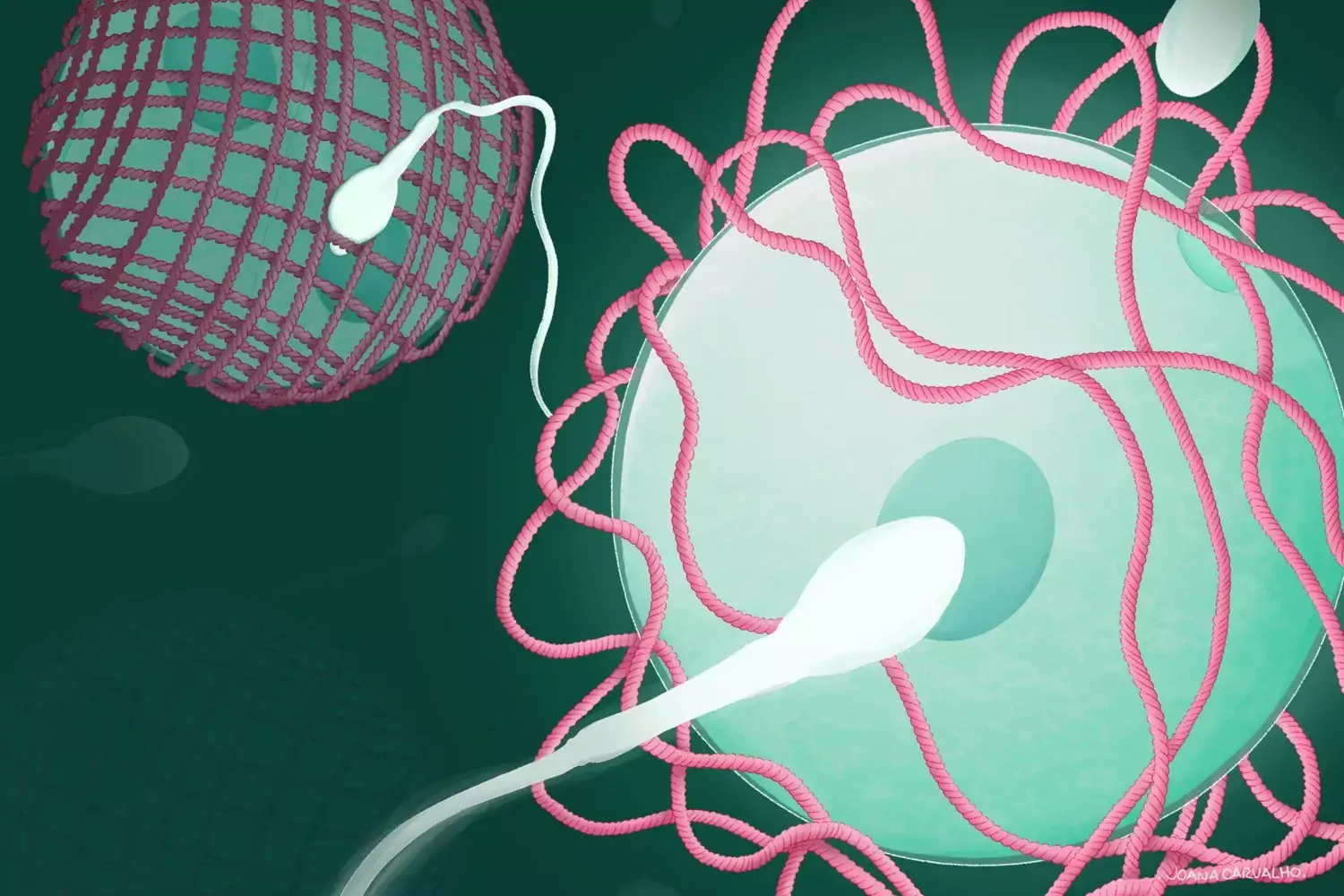New discovery reveals how the egg controls sperm entry

After the egg has been fertilized by a sperm, the surrounding egg coat tightens, mechanically preventing the entry of additional sperm and the ensuing death of the embryo. This is according to a new study led by researchers at Karolinska Institutet and published in the journal Cell. The work also explains how mutations in egg coat proteins can cause female infertility and may eventually lead to new contraceptive methods.
Fertilization in mammals begins when a sperm attaches to the egg coat, a filamentous extracellular envelope that sperm must penetrate in order to fuse with the egg. Now an international team of researchers has mapped in detail the structure and function of the protein ZP2, an egg coat filament component that plays a key role in regulating how egg and sperm interact with each other at fertilization.
A fatal condition for the embryo

“It was known that ZP2 is cleaved after the first sperm has entered the egg, and we explain how this event makes the egg coat harder and impermeable to other sperm,” says Luca Jovine, Professor at the Department of Biosciences and Nutrition, Karolinska Institutet, who led the study. “This prevents polyspermy – the fusion of multiple sperm with a single egg – which is a fatal condition for the embryo.”
The changes in the egg coat after fertilization are also crucial to female fertility by ensuring the protection of the developing embryo until this implants in the uterus. The new knowledge may therefore have implications for the development of non-hormonal contraceptives that interfere with the formation of the egg coat. Moreover, the study explains egg coat-associated forms of female infertility.
“Mutations in the genes encoding egg coat proteins can cause female infertility, and more and more such mutations are being discovered,” explains Luca Jovine. “We hope that our study will contribute to the diagnosis of female infertility and, possibly, the prevention of unwanted pregnancies.”
Looking for the sperm receptor
Importantly, the study also shows that a part of ZP2 that was previously thought to act as a receptor for sperm is not necessary for sperm to attach to the egg. This raises the question of what is the true sperm receptor on the egg coat, which the researchers plan to investigate further.
The researchers combined X-ray crystallography and cryo-EM to study the 3D structure of egg coat proteins. The interaction between sperm and eggs carrying mutations in the ZP2 protein was functionally studied in mice, while the AI program AlphaFold was used to predict the structure of the egg coat in humans.
The study was carried out in collaboration with Osaka and Sophia universities in Japan and the University of Pittsburgh, USA, using data collected at SciLifeLab and the ESRF, DLS and BESSY II synchrotrons.
The research was mainly funded by the Knut and Alice Wallenberg Foundation, the Swedish Research Council and the Centre for Innovative Medicine (CIMED). There are no reported conflicts of interest.
Publication
”ZP2 cleavage blocks polyspermy by modulating the architecture of the egg coat”, Shunsuke Nishio, Chihiro Emori, Benjamin Wiseman, Dirk Fahrenkamp, Elisa Dioguardi, Sara Zamora-Caballero, Marcel Bokhove, Ling Han, Alena Stsiapanava, Blanca Algarra, Yonggang Lu, Mayo Kodani, Rachel E. Bainbridge, Kayla M. Komondor, Anne E. Carlson, Michael Landreh, Daniele de Sanctis, Shigeki Yasumasu, Masahito Ikawa, Luca Jovine, Cell, online 14 March 2024, doi: 10.1016/j.cell.2024.02.013.
